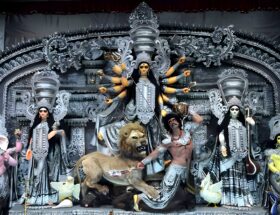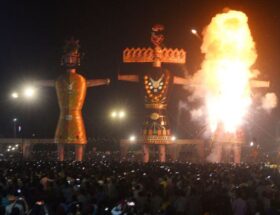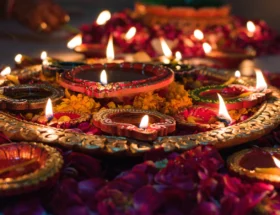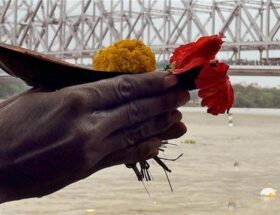Losar: The Celebration of the Tibetan New Year
Introduction to Losar
One of the most colorful festivals that Tibetans attend is, perhaps, Losar, which means Tibetan New Year. This festival is authentically celebrated not only in Tibet itself but also, to a great extent, in Bhutan and in general in Tibetan communities all over the world. This event celebrates the marks of entering a new year according to the Tibetan lunar calendar. As a rule, the festival occurs in February or March.
Historical Background of Losar
Losar actually originated in the pre-Buddhist period in Tibet as a simple agricultural festival in celebration of the flowering of the apricot tree. However, with the arrival of Buddhism in Tibet and the fusion of the ancient Bon practices and rituals with those introduced by Buddhism, it became a religious festival.
Cultural Significance of Losar
Well, it’s not all about New Year celebration; rather, it is the period when there is spiritual rejuvenation and cultural manifestation. This goes on for almost two weeks, but the first three days are of paramount importance.
Day 1: Gutor means the day of purification
Gutor marks the start of Losar, a day for cleansing and purifying to dispel evil spirits and negative thoughts. Guthuk, a symbolic noodle soup with nine ingredients, is often prepared to eliminate negativity.
Day 2: Losar Eve – Family and Faith
Losar Eve, therefore is a day of family and religious activities, the cleaning of homes and decorations, offerings to gods and deities, and visits to monasteries with reverence and blessings for the coming year.
DAY 3: NEW YEAR DAY – A Day of Merry Making
Visitors mark this by visiting monasteries and increasing the hoisting of prayer flags. The community holds most religious ceremonies at the beginning of the New Year. It also involves visits to families, exchanging gifts, sharing of traditional foods and watching of cultural activities such as folk dances and the Tibetan opera.
Thus, Losar is also a time for community and expression of culture. Traditional food is not even lacking: deep-fried pastry, Khapse, and Tibetan barley beer, Chang. Prayer flags, in bright colours, are held at homes and toward monasteries, who bear the prayers and blessings to the wind.
Conclusion: Happy New Year Begins
More of a New Year’s festival, Losar is the celebration of heritage, spirituality, and community that makes Tibet. When families come to celebrate the New Year Festival, they do so in joy and hope, but most of all, with deep cultural pride.
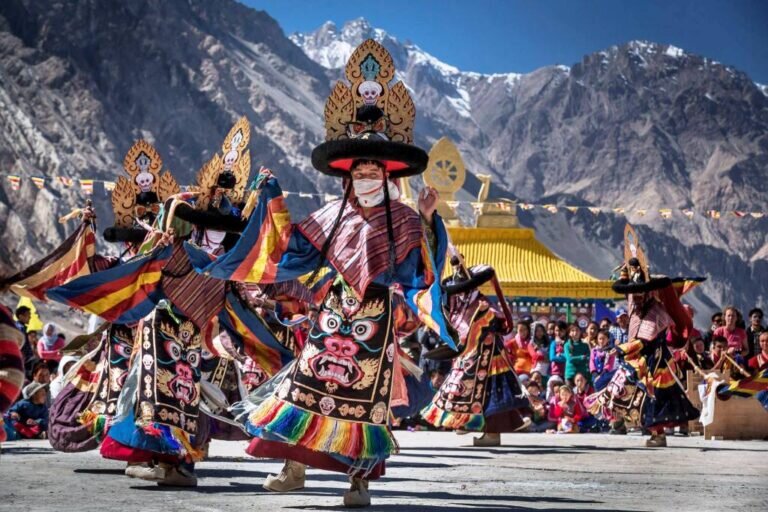
Sarees that women can wear in this festival: Aesthetic Cyan Khadi Cotton Saree
FAQs on Losar
1. What is Losar Tibetan New Year?
Well, one of the most important festivals in Losar is also named the Tibetan New Year. It originated in Tibet but Tibetan communities highly celebrate it in Bhutan, Nepal, and other parts of the world. Primarily, this marks the birth of a new year according to the Tibetan lunar calendar.
2. When do people celebrate Losar, the Tibetan New Year?
This festive occasion comes every year sometimes between February and March according to the lunar calendar. The date keeps changing every year.
3. How long does Losar Tibetan New Year last?
The Losar generally extends to two weeks, but note that the first three days assume primary importance.
4. What are the major rituals that people observe during Losar, the Tibetan New Year?
The major rituals conducted during Losar are purifying the environment spiritually, reuniting the family with relatives, decoration of homes and monasteries, hoisting of prayer flags, and offerings made to deities.
5. Why is there Gutor during Losar Tibetan New Year?
Gutor literally means the day of purification, which people reserve for carrying out rituals meant to shoo away bad spirits or negative energies with the hope of starting the New Year in a clean state.
The foods traditionally taken at this special time include a variety of Khapse, deep-fried pastry, Guthuk, a special soup, and Chang, Tibetan barley beer.
7. What is the significance of prayer flags during Losar?
During Losar, people fly vibrant prayer flags that symbolize peace, compassion, strength, and wisdom. The winds blow the prayers and mantras through the flags, spreading their blessings further.
8. How Losar is Different from Chinese New Year?
Instead, both these lunar festivals believe in their exclusivity with reference to the cultural practices, rites, and timings of the festival. It is associated very strongly with intense Tibetan Buddhism. At the same time, it has strong elements of Chinese cultural traditions.
9. What is the function of monasteries during the celebration of Losar Tibetan New Year?
Monasteries occupy a central role during Losar. Family members visit monasteries to perform religious ceremonies and make offerings, praying for blessings from the monasteries in the New Year.
10. What preparations do the families make for the Losar celebration?
Houses are cleaned and decorated; special foods are prepared, and offerings are made in preparation for Losar. This is a time to bring families closer and rejuvenate the spirit with various cultural celebrations associated with it.
.

